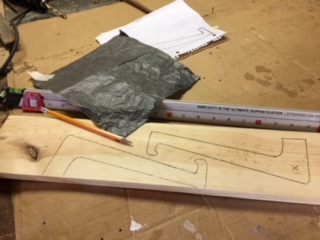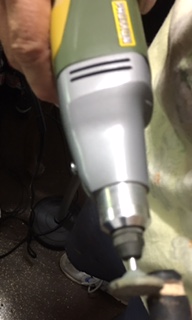Hi everyone. I'm doing the blog for Misty this week. She had cataract surgery last Tuesday and she is having her other eye done this Thursday. So far all has gone well but she of course has to avoid sawdust in her eyes for awhile. So I'm stepping in as substitute until she is hale and hardy again. Boy, is she going to owe me for this one.
4th of July is just around the corner. Let's celebrate our independence and freedom! I also hope and pray for a little more peace in our country, and in the world.
Let's get busy on this little decorative piece. It really is very simple and doesn't require a lot of materials so it is easy and cheap. This will probably take you just a couple of hours, longer if you really get fancy!
Materials:
1/4 inch plywood or similar thin wood.
6-8 inches of thin wire
dental floss or strong thread
plaid paints (I used red white and blue)
glitter (optional)
sticky foam sheet (optional for making a star stamp)
wood sealer (I used Krylon triple thick spray)
Equipment:
proxxon mini scroll saw (optional)
scissors
small drill or rotary tool
small drill bit.
The first thing I did was to draw a star onto a piece of cardboard. If you are good at drawing you could just draw it onto your piece of wood. Size is up to you. My star measures about 10" wide and tall

To cut my "stripes" I set the fence on my proxxon mini table saw to 1/2" from the blade then I simply ran my wood piece across it 13 times. So easy and they come out all the same--exactly.
Now I have all my pieces
I sand everything...everything... using the proxxon OZI/E delta sander... because I love it... because it is so easy...does a fantastic job... and I hate splinters!
I drilled holes through the "stripes" and also at the ends of the side points of the star.
Time to Paint:
I paint the star blue and the stripes I paint red and white. I am using plaid paints for this. They cover well and go on smooth.
I cut out a star shape from the sticky foam sheet and stuck it on a stick to use as a stamp on my star. Worked well. I stamped white stars on my big blue star.
I used dental floss and threaded my "stripes" onto the string then I secured the strings to the arms of the star. The stripes were like a little skirt. 😏 Finish it off with spray sealer and it is done. YAY..
But...
Here I changed my mind and decided to go a little bit fancy. I used the proxxon scroll saw to cut a smaller star out of the middle, then I painted it white and wrote peace and USA on it. I secured it with wire and added glitter. The wire goes through both stars and out the back of the big one to form a hanger. Now I am done. Time to hang it.
I hope you all have a fabulous 4th! Thank you for stopping by. Thanks again Proxxon tools, the Plaid company, Kapro tools with vision and Terry Sproul.





















































